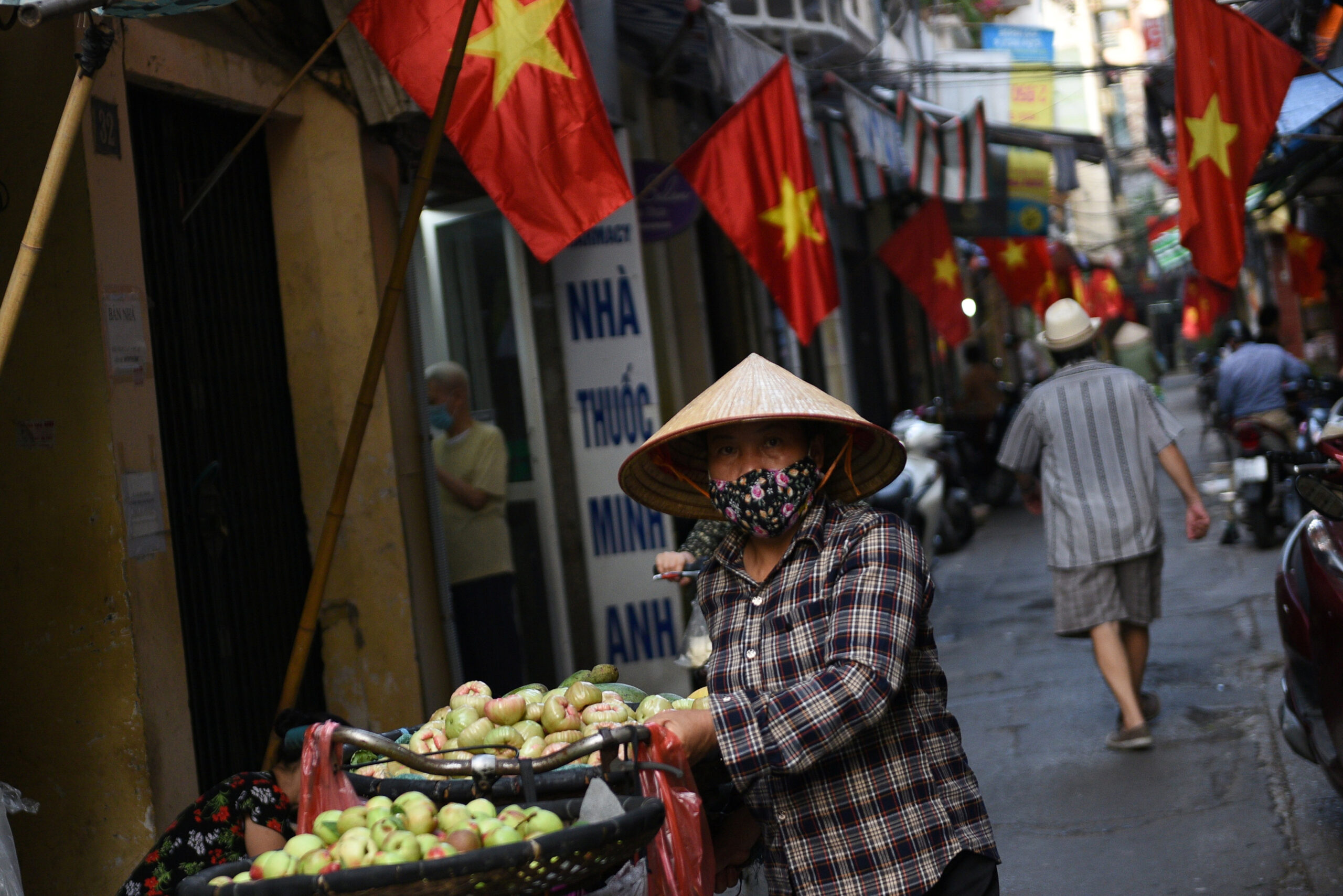Vietnam’s ‘bamboo diplomacy’ shifts into higher gear

A vendor walks in an alley decorated with national flags ahead of the upcoming elections in Hanoi, Vietnam, May 19, 2021. Picture taken May 19, 2021. REUTERS FILE PHOTO
HANOI — Communist Party-ruled Vietnam upgraded ties with Australia on Thursday, in the latest success for its “bamboo diplomacy”, after it boosted relations last year with the world’s top powers, as it tries to navigate rising global tensions.
After a string of deals in recent months, the Southeast Asian country’s top partners now include the United States, China, India, South Korea and Russia, which for decades has supplied most of Vietnam’s military equipment.
Below are details of Vietnam’s increasingly dynamic foreign policy approach and its most important diplomatic agreements over the last months.
READ: Australia and Asean call for restraint in SCS, ceasefire in Gaza
What is ‘bamboo diplomacy’?
A regional manufacturing powerhouse, Vietnam is an increasingly strategic player in global supply chains.
Article continues after this advertisementTo bolster this position, the country’s most powerful figure, Communist Party General Secretary Nguyen Phu Trong, used in 2021 the imagery of “strong roots, stout trunk, and flexible branches” of the bamboo plant to describe Vietnam’s foreign policy approach of having “more friends, fewer foes”.
Article continues after this advertisementChina
Vietnam and China agreed in December to build a community with a “shared future” during a visit to Hanoi by Chinese President Xi Jinping.
The two nations signed 36 cooperation documents in areas such as transport infrastructure, trade, security and digital economy, and published a joint declaration with wide-ranging commitments.
READ: PH, Vietnam to sign pact to face sea row better
China is Vietnam’s largest trading partner and a vital source of imports for its manufacturing sector, but the two communist countries have been for years embroiled in disputes in the South China Sea – the latest in May. Tensions have subsided somewhat more recently as Beijing’s attention has focused on another claimant in the waterway, the Philippines.
United States
Vietnam and the United States elevated in September their relationship to a Comprehensive Strategic Partnership, the highest level in Vietnam’s ranking, and announced closer cooperation on semiconductors and critical minerals during a visit to Hanoi by U.S. president Joe Biden.
The United States, which is the top importer of Vietnam’s goods, pushed for the upgrade as part of its strategy to secure uninterrupted access to global supply chains and to contain China in the South China Sea.
Japan
Vietnam and Japan in November upgraded their relations to Vietnam’s top tier during a visit by Vietnamese president Vo Van Thuong to Tokyo, agreeing to boost security and economic cooperation.
Japanese multinationals, including Canon, Honda, Panasonic and Bridgestone, are among the largest foreign investors in Vietnam.
South Korea
Vietnam and South Korea elevated their ties to a Comprehensive Strategic Partnership in December 2022 during a visit to Seoul by then Vietnamese president Nguyen Xuan Phuc, focusing on trade, investment, defence and security.
South Korea is the largest source of foreign investment in Vietnam, with Samsung Electronics being the largest single foreign investor in the country where it assembles half its smartphones.
In June the two countries signed 17 additional agreements, including on security and critical minerals during a visit to Vietnam by South Korean President Yoon Suk Yeol.
Vatican
Vietnam and the Vatican agreed in July to have the first post-war resident papal representative in Hanoi during a visit to meet Pope Francis by Vietnamese President Vo Van Thuong. The representative was appointed in December.
Home to nearly 7 million Catholics, Vietnam broke relations with the Vatican after the Communists took over the reunited country at the end of the Vietnam War in 1975. Talks to appoint a papal representative had started in 2009.
Trading hub
Vietnam is part of the Association of Southeast Asian Nations (ASEAN) economic union and has free trade deals with the European Union, Britain, Chile and South Korea. In July it added Israel to its list of free-trade partners.
It is also a member of wider trade pacts, including the Comprehensive and Progressive Agreement for Trans-Pacific Partnership (CPTPP), which includes Canada, Australia and Mexico, and the Regional Comprehensive Economic Partnership (RCEP) which includes China and Japan.